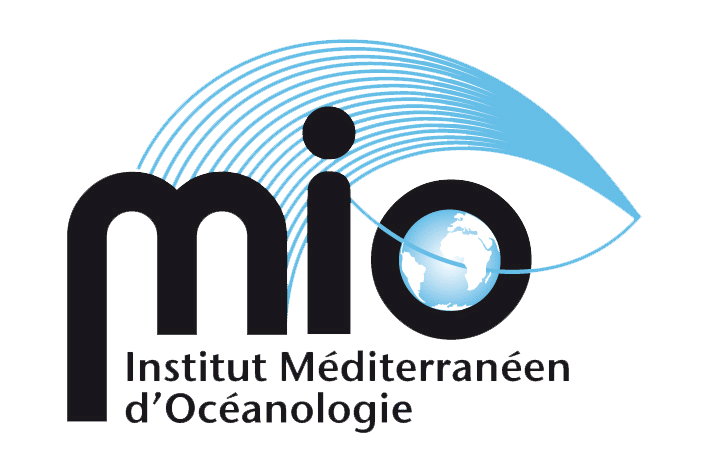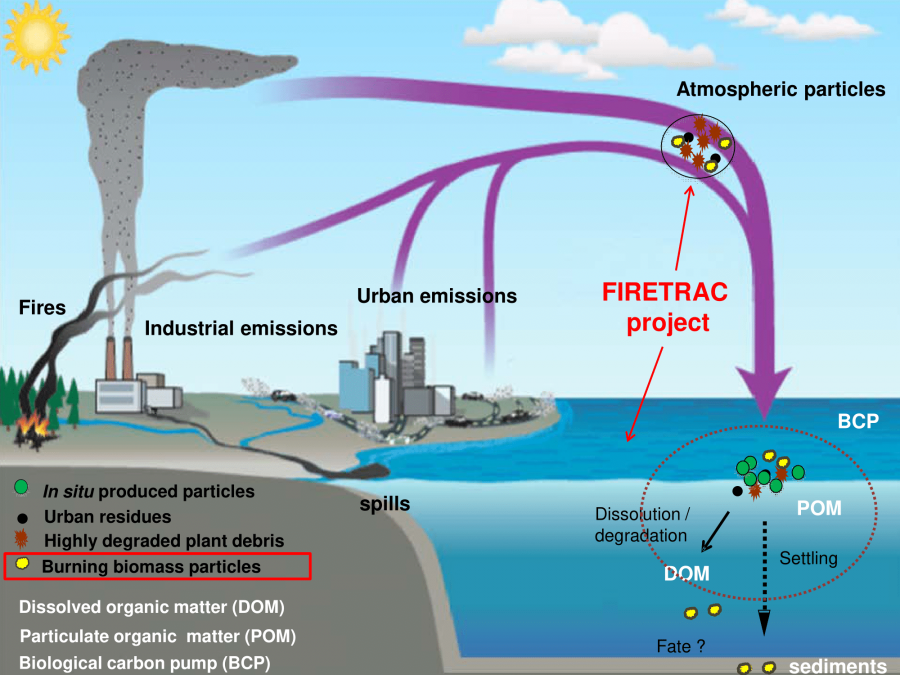Impact and fate of Biomass burning-particles in the Mediterranean seawater using carbon stable isotopes, radiocarbon dating, and modeling
Lab partners : CEFREM (P. Kehervé); CEREGE (E. Bard); EPFL (A. Nenes)
FIRETRAC main aim is to shed light on Burning Biomass (BB) and wildfire−produced atmospheric particles dynamics in marine waters and establish their link with the marine Biological Carbon Pump (BCP). Such information will give a very strong evidence if BB associated molecules (BB tracers such as anhydrosugars and polyaromatic hydrocarbons or PAHs) have the potential to be rapidly mineralized, and thus re-injected to C–cycle as CO2, or stored for several thousands of years in the dissolved organic matter (DOM) pool/or marine sediments. To do so FIRETRAC project is declined in three main objectives:
- Objective 1 : To monitor anhydrosugar and PAH concentrations monitoring over a 2−year period in 3 specific offshore coastal sites in the North Western Mediterranean Sea (NW Med. Sea) which will help to establish/improve local carbon budgets to coastal areas with respect to CO2 emissions.
- Objective 2 : To perform anhydrosugar specific isotope measurements (δ13C, ∆14C) in BB-particles, DOM and marine sediments to understand the origin and fate of anhydrosugars in the marine environment and establish the link (if any) between BB−particles and BCP.
- Objective 3 : To perform biodegradation experiments under controlled laboratory conditions using anhydrosugar standards under the presence of marine bacteria which will provide important knowledge on the short−term dynamics on the fate of anhydrosugars in the marine environment.





